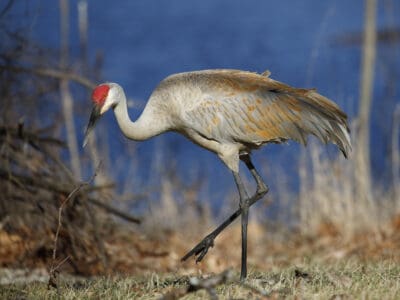Indiana, known as the “Hoosier State,” is a midwestern state that is part of the Great Lakes Region. It borders Michigan to the north, Ohio to the east, Illinois to the west, and Kentucky to the South. Its major rivers are the Ohio River, Whitewater River, and Wabash River, which is the longest river east of the Mississippi.
Indiana has a varied topography that includes dense forests, grassland prairies, riverbanks, lakeshores, and rocky hills. Most of the land in Indiana is dedicated to farming. The principal crops are corn, soybeans, wheat, and dairy products. Indiana also has major population centers and many manufacturing industries are based there. It still has wild places, however, and they are home to a healthy population of native wildlife. The Hoosier National Forest is located in the hills of southern Indiana.
©iStock.com/JoeyBLS
Wild Animals in Indiana
Indiana’s forest areas, rivers, and location on the Great Lakes have given it a wide variety of wildlife. It is home to common forest animals such as black bears, coyotes, badgers, beavers, and cottontail rabbits. Its rodents include fox squirrels, gray squirrels, and groundhogs. Bison and white-tail deer roam the grasslands, and black bears have a small but stable population in the state.
Indiana’s chief predators are gray foxes, red foxes, bobcats, and coyotes.
It has 13 native bat species, including some of the rarest species like Rafineque’s big-eared bat (Corynorhinus rafinesquii), red bat (Lasiurus borealis), silver-haired bat (Lasionycteris noctivagans) and Indiana myotis (Myotis sodalis).
The state has its own native species, including the Allegheny woodrat and the eastern mole. Its unique reptiles and amphibians include the alligator snapping turtle, Blanding’s turtle, and eastern hog-nosed snake.
In the forests and wetlands, it is common to spot herons, turtles, ducks, geese, and other waterfowl. You will also hear the western chorus frog and the spring peeper, two frog species known for their charming springtime calls. Among its small mammals are the muskrat, opossum, and raccoon.
Birds native to Indiana include the ruffed grouse, wild turkey, bobwhite quail, and numerous songbirds. It also has one of the country’s rarest kingfishers, the belted kingfisher (Megaceryle alcyon), which is the only kingfisher found in the state.
Indiana’s rivers and streams teem with northern pike, striped bass, muskie, gar, and walleye. It is home to the eastern hellbender, a salamander that is one of the rarest amphibians in the world. This salamander with a strange name is also the largest salamander species in North America.
Some species of ticks can also be found in Indiana. Indiana is home to one of the country’s rarest kingfishers, the belted kingfisher. ©Harry Collins Photography/Shutterstock.com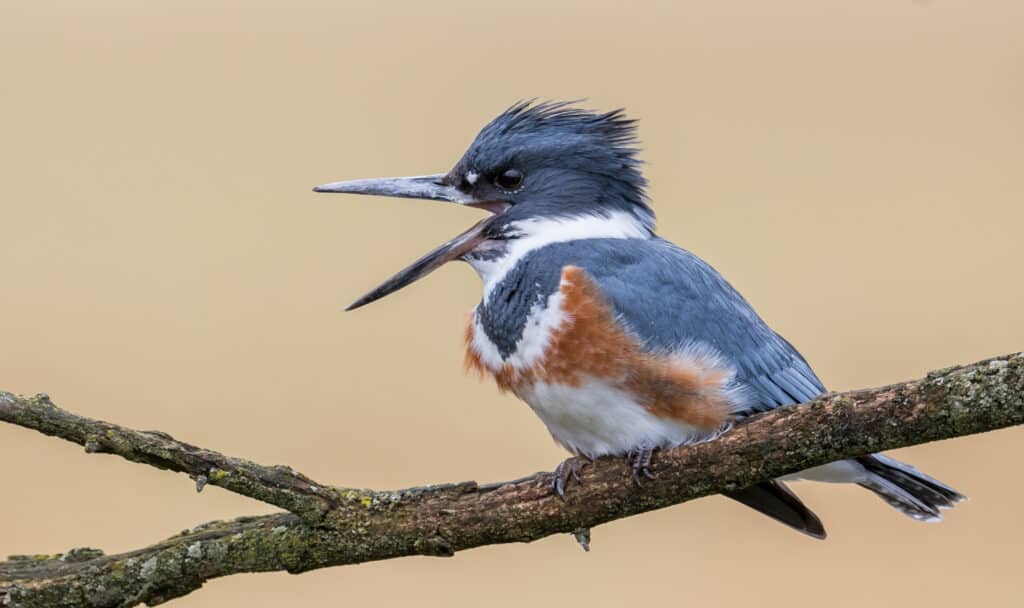
The Official Animal of Indiana
It’s common for states to choose mammals as their official animals, but Indiana chose a bird. In 1933, Indiana adopted the cardinal as its state bird. Native to Indiana, the cardinal lives in the state year-round. This bright red songbird is also the state bird of Virginia and North Carolina.
Indiana designated the Say’s firefly, one of Indiana’s 43 species of Lampyridae, as the state insect in 2018. This was only after four years of lobbying by the students of Cumberland Elementary in West Lafayette that began when second grader Kayla Xu discovered Indiana was one of only a few states that did not have a state insect. The class decided the best insect to represent the state would be Say’s firefly, named by Indiana naturalist Thomas Say in 1824 and which was also nominated by Purdue University entomologist Tom Turpin for state insect in 1998.
They embarked on an extensive letter writing campaign that led to a bill being created but never put to a vote, however when the students wrote directly to Indiana Governor Eric Holcomb in 2017, he encouraged them to send letters of support to his office so he could share them with the General Assembly. Assisted by letter writing from students around Indiana, the students’ efforts were successful when the bill cleared the General Assembly with near-unanimous support and Gov. Holcomb honored them by having the signing ceremony at their school on March 23, 2018. Indiana designated the native cardinal as its state bird in 1933. ©iStock.com/ANCHASA MITCHELL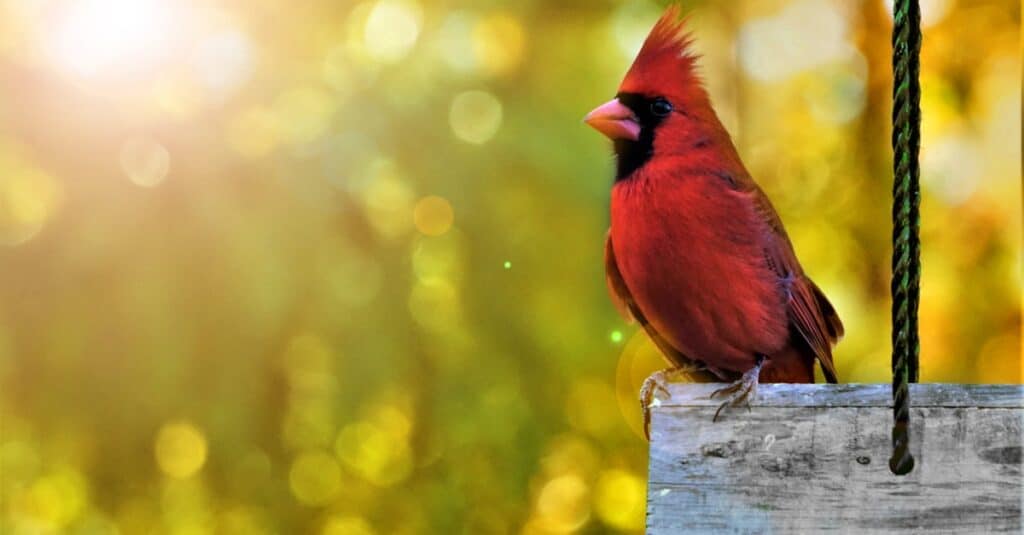
Where to Find the Top Wild Animals in Indiana
Although it has a lot of farmland and large industrial cities, Indiana has many national and state parks and protected areas where its native wildlife thrives.
- Indiana Dunes State Park is a protected stretch of beach along the coast of Lake Michigan. The beach features sand dunes that soar as high as 200 feet. It is an excellent place to see shorebirds and native flowers that include many native orchid varieties.
- Prophetstown State Park is a wetlands and forest preserve on the shoreline of the Rock River. You are likely to see a muskrat, otter or beaver here. White-tail deer, rabbits and ducks also frequent the park.
- Oubache State Park, located along the Wabash River, is a camping area where you can see many animals, including a resident herd of bison in a protected enclosure.
- Tippecanoe River State Park is ideal for nature lovers. Bordering seven scenic miles of the Tippecanoe River, this park allows you to see frogs, newts, squirrels, raccoons, beavers and an enormous variety of waterfowl. Some of the rarest birds have been spotted here, including the swamp sparrow.
- Chain of Lakes State Park is home to nine large lakes and 25 miles of forested trails. It is a wonderful place to fish for Indiana’s native fish species like catfish, white bass and northern pike. You will also see amphibians, reptiles, white-tail deer, bobcats and many small rodents.
- Hovey Lake Fish and Wildlife Area lies between the Ohio and Wabash rivers in southwest Indiana. It is a 7,500-acre park with a lake, swampland and forested areas. It is a good place to see birds and fish. Muskrat dens and beaver dams dot the lakes, and many small mammals and rodents visit the streams to fish and get water.

Tippecanoe River State Park is one of Indiana’s top parks for nature lovers.
©Scott J. Kingery/Shutterstock.com
Largest Animals in Indiana
Among the diverse range of animals found in Indiana there are some species that are a little, or a lot, larger than others.
The biggest in the state is the bison. It’s the largest land animal in North America, and a male can weigh up to 2,500 pounds and grow to 6 feet tall, while a female on average can weigh 1,000 pounds and reach 5 feet tall. Bison were hunted to extinction in the state in the 1830s, however a herd of 23 bison were reintroduced to Indiana by the Nature Conservancy in 2016. These bison can now be seen roaming wild at the Kankakee Sands Nature Preserve and their population is gradually increasing.
The longest snake in Indiana is the eastern rat snake, which frequently grows to lengths of up to 6 feet. The longest of this non-venomous species ever recorded was 7ft 6in long.
The largest bird in the state is the bald eagle. Females are typically about 25% larger than males, with the male’s wingspan on average 6 feet at most, while a female’s wingspan can hit 8 feet. Females are usually 5-10 pounds heavier than males.
One of the biggest species in Indiana is the blue catfish. It can weigh up to 150 pounds and reach close to 4 feet in length. The largest blue catfish ever recorded in Indiana weighed 104 pounds and was netted in the Ohio River. These fish are primarily only found in the state’s lakes, rivers, and large streams.
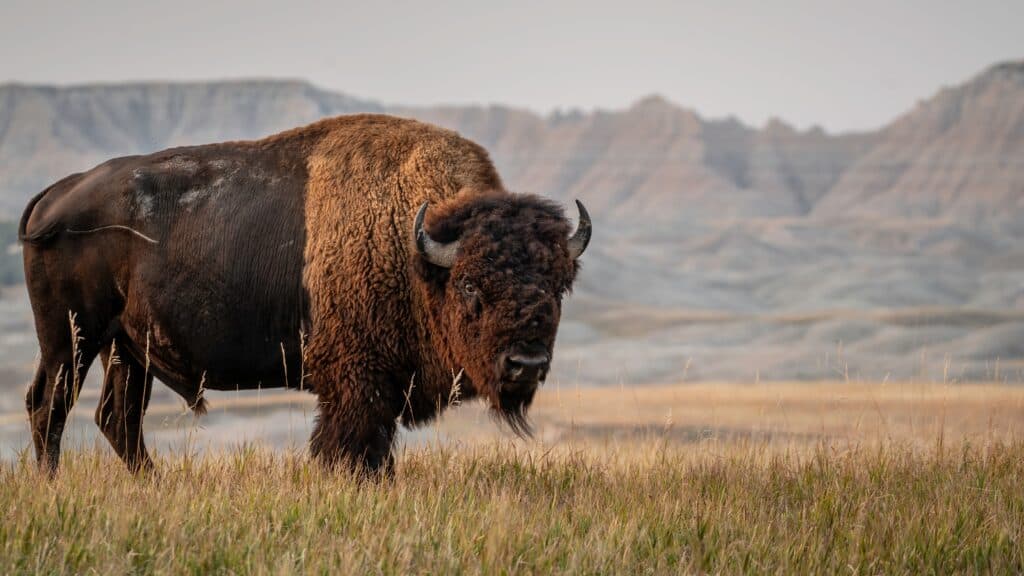
The bison is the largest animal in Indiana and biggest land animal in North America.
©Tim Malek/Shutterstock.com
The Most Dangerous Animals in Indiana Today
Most of Indiana’s animals are not dangerous, however there are some that can harm humans in painful if not fatal ways.
Any state with a high population of deer is likely to report many accidents involving deer and drivers and in Indiana more than 14,000 deer-related crashes are reported per year. Despite the presence of black bears, bobcats, and coyotes, there have been no recorded attacks of these animals on humans.
Indiana has several snake species, but most of them are harmless to humans. The snakes that are venomous are the timber rattlesnake, copperhead, and cottonmouth — and these are the most dangerous animals in the state.
The timber rattlesnake has large, long fangs and when it bites a person its venom will instantly cause pain, swelling, excessive bleeding, and various neurological symptoms. The presence of hemotoxins in its venom prevents blood from coagulating and means a wound cannot properly close, so there is a chance that a person could bleed out and die if medical treatment is not given immediately. While copperheads’ venom contains hemotoxins, the effect is relatively localized and although a bite may be painful it is generally only mildly dangerous to most people.
Cottonmouths have very potent venom that can destroy human tissue and leave permanent scarring but is almost never fatal. Its venom is less powerful than the rattlesnake’s venom but typically more powerful than the copperhead’s venom. When biting to defend themselves, cottonmouths release less venom than if biting to injure and kill prey.
One spider to watch out for is the black widow spider. It has a potent neurotoxic venom that can cause muscle aches, chest pain, nausea, muscle tightness, cramping, difficulty breathing, and diaphragm paralysis. Another is the brown recluse. Approximately 10% of bites from brown recluses are dangerous and may even be fatal in some cases.
With two-thirds of the state dedicated to farmland, it’s possible that farm animals can pose a threat to people in Indiana. Farming accidents involving animals, particularly with larger animals like horses and pigs (which can grow 3-6 feet long and weigh up to 770 pounds), can occur. There are about 22 fatalities related to cow incidences each year according to the CDC. Dairy cows are easily startled and considering they can reach 5.5 feet tall and weigh 1,400-2,000 pounds there is a risk of being trampled, especially by the more aggressive bulls. Ducks and turkeys can carry infectious diseases such as psittacosis that can be transmitted to humans by inhaling dust from feathers, secretions and droppings. The timber rattlesnake’s venom will instantly cause pain, swelling, and excessive bleeding. ©Scott Delony/Shutterstock.com
Endangered Animals in Indiana
Indiana has more than 150 species on its Species of Greatest Conservation Need list.
The list includes the following animals:
- Barn owl (Tyto alba)
- Allegheny woodrat (Neotoma magister)
- Eastern hellbender (Cryptobranchus alleganiensis)
- Eastern mud turtle (Kinosternon subrubrum)
- Plains pocket gopher (Geomys bursarius)
- Swamp rabbit (Sylvilagus aquaticus)
- Badger (Taxidea taxus).
As part of its Wildlife Action Plan, the state established the Indiana Nongame Wildlife Fund. Although it is managed by the state’s Department of Natural Resources (DNR), the fund does not get government money and relies on private donations.
According to the DNR, Indiana citizens have donated more than $13 million to help preserve the state’s endangered animals. The state also receives funding from the U.S. Fish and Wildlife Service to help preserve its most endangered species.
Indiana, like many other states, has taken steps to conserve its natural resources. According to a survey by the Nature Conservancy, 90% of Hoosiers of all political parties want the government to take more steps to preserve natural spaces, and 74% support the use of alternative energy sources.
The osprey is one species that can be considered an Indiana conversation success story. The bird of prey was previously classified as endangered but due to the increased number of nests built, with 126 reported to be active in 2020, the DNR has remove it from the endangered list. Previously considered endangered in Indiana, the osprey is no longer on the endangered species list. ©iStock.com/Harry Collins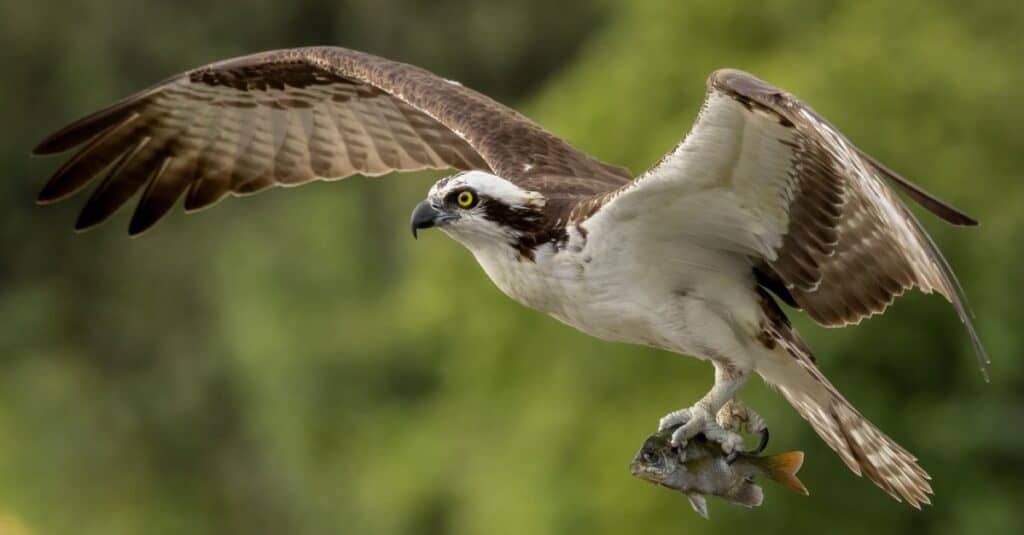
Rare Animals of Indiana
In addition to endangered and rare species such as the country’s rarest kingfisher, the belted kingfisher, and the eastern hellbender, one of the rarest amphibians in the world, Indiana is home to some animals that are becoming increasingly rare to locate and see, mostly due to declining populations from habitat loss.
The Indiana bat was on the first list of endangered species created in the U.S. in 1967 and is one of Indiana’s longest listed endangered species. These bats named for the state are at threat from humans interrupting their hibernation during the winter, pesticides and habitat loss from clear cutting forests. This species also suffers from by white-nose syndrome, a fungal disease that infects hibernating bats and ultimately causes bats to starve and die. Since observed in 2006, the disease has killed millions of bats across the country.
Other species that are rare in Indiana include:
- Ottoe skipper: This small butterfly with a wingspan under 40 milimeters is very rare and there have been few sightings in recent times. It’s endangered, with urbanization causing habitat loss.
- Poweshiek skipperling: Once found in Southern Canada down through Indiana, this butterfly suffered a devastating decline in population due to habitat loss and since 2005 has become extremely rare.
- White warty-back pearly mussel: This endangered mollusk was once a common creature found where major rivers meet. It’s thought they still live somewhere in Indiana, but sightings are incredibly rare. The level of concern about this species is high as there are none in captivity.
- Rusty patched bumble bee: The population of these bees has decreased by nearly 90% in the past two decades due to their habitats becoming farming grounds and being exposed to pesticides.
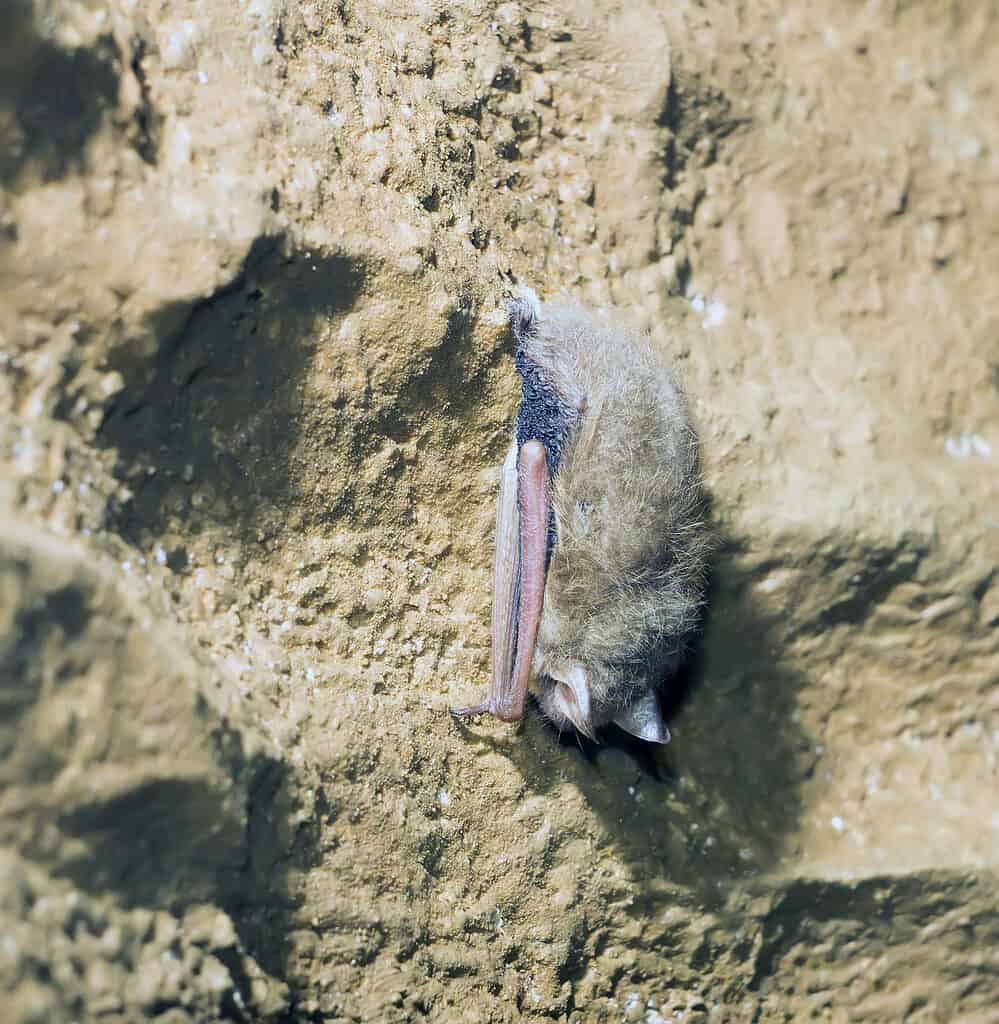
The Indiana bat is one of the state’s longest listed endangered species.
©IrinaK/Shutterstock.com
The Official State Animals of Indiana
The official state animals of Indiana are iconic symbols that represent the state’s vibrant, natural beauty. As of 2023, the state animals included species like the northern cardinal, known for its bright red feathers and melodic song, and Say’s firefly, a favorite of dark summer nights.
The Flag of Indiana
Indiana’s flag was officially adopted by the Indiana General Assembly on May 31, 1917 as part of the celebration of the state’s 1916 centennial. The design, by artist Paul Hadley of Mooresville, was the winner of a contest sponsored by the Indiana Society of the Daughters of the American Revolution. There was a $100 cash prize for the winner and the contest attracted 200 entries.
The design consists of a blue field with a torch surrounded by 19 stars: 13 in an outer circle, five in an inner semi-circle, and a large star above the torch. The 13 stars represent the original states of the U.S., the five symbolize the states admitted before Indiana, and the single star is the embodiment of Indiana. The torch is representative of liberty and enlightenment and the rays depict their influence.
The General Assembly made an addition to Hadley’s design by including the word “Indiana” written above the torch. It was originally technically the state banner but later became the state flag in 1955 when Indiana standardized the flag dimensions.
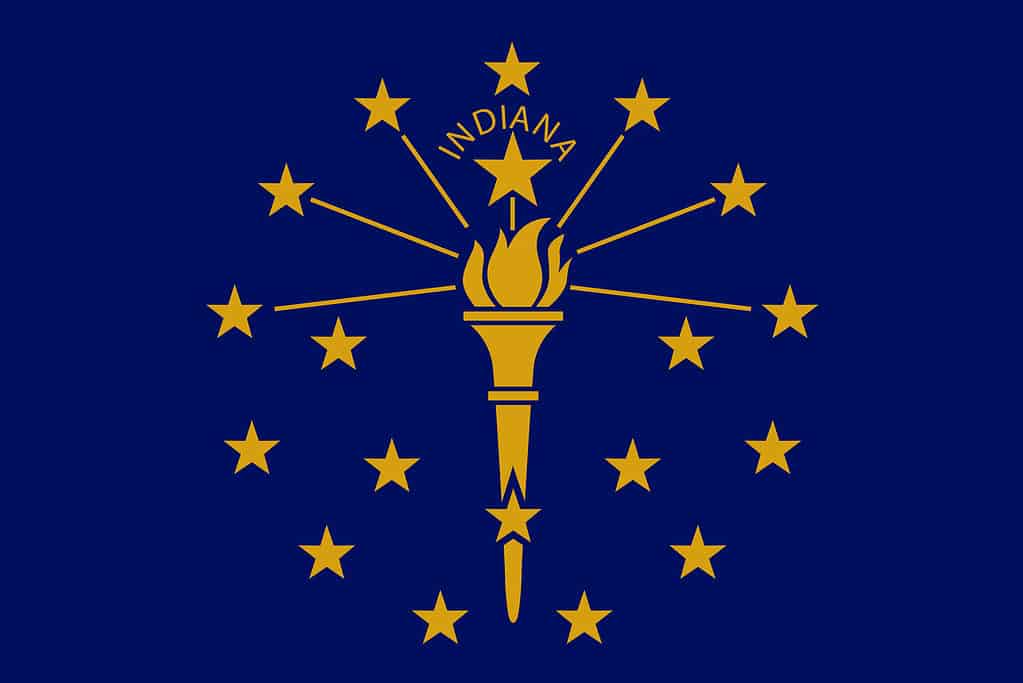
Indiana’s flag features a torch surrounded by 19 stars, which represent states in the U.S.
©iStock.com/Maksym Kapliuk
Indiana State Seal
The Indiana state seal has a long history that goes all the way back to the year 1787. The seal features a man chopping a tree while a buffalo jumps over a log and the sun rises over the mountains.
More Articles Related to Indiana
Read about:
- extinct animals that lived in Indiana.
- the beautiful waterfalls in Indiana.
- the coldest place in Indiana.
- the types of hawks in Indiana.
- the best aquarium in Indiana.
- the types of rattlesnakes in Indiana.
- the best dog parks in Fort Wayne, Indiana.
- discover the largest whitetail deer ever caught in Indiana
- the best fish to catch in Indiana in the summer.
- the best places to camp in Indiana this summer.
- Deer Season In Indiana: Everything You Need To Know To Be Prepared
- 9 Must-See Birds in Indiana
- Discover the Largest Forest in Indiana (And What Lives Within It)
- Discover the Largest Channel Catfish Ever Caught in Indiana
Indianian Animals

Admiral Butterfly
Stunningly beautiful wings
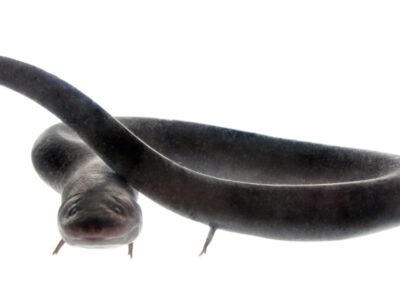
American Eel
Don't eat raw eel! Their blood is poisonous to humans when consumed raw.

Armyworm
They are so named because they "march" in armies of worms from one crop to another in search of food
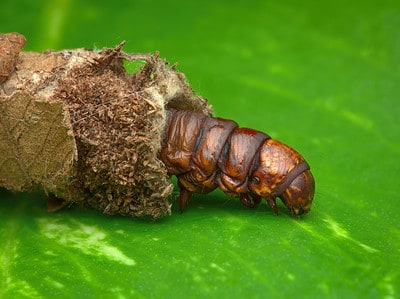
Bagworm Moth Caterpillar
They continually enlarge their protective cases

Beewolf wasp
They hunt bees
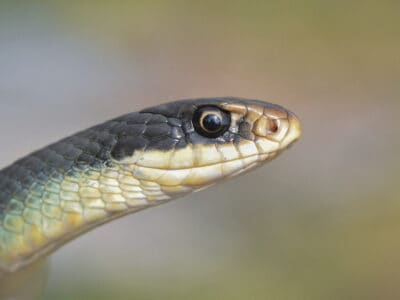
Blue Racer
Some blue racers have smooth scales that are solid electric blue while others are grayish or brownish.
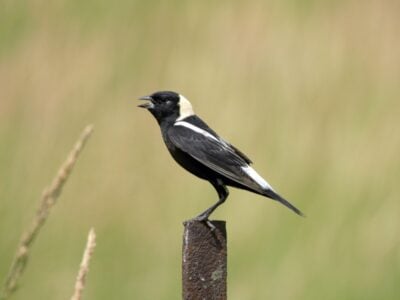
Bobolink
In spring, the male bobolink is the only North American bird who is dark below and light colored above. This makes identification easy.

Common Yellowthroat
The Common Yellowthroat stays close to the ground and uses stealth to survive!
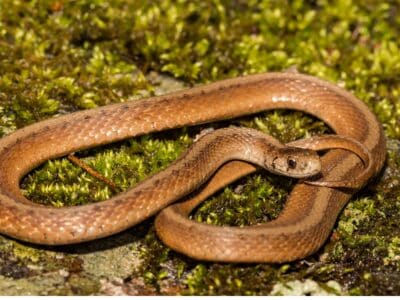
De Kay’s Brown Snake
They have specialized jaws for removing snails from shells.
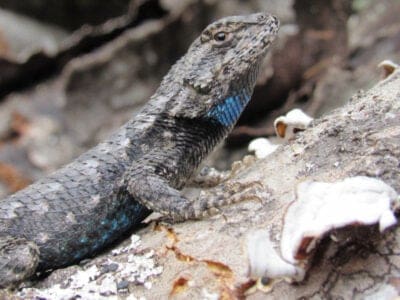
Eastern Fence Lizard
Females are usually larger than males.

Eastern Hognose Snake
Eastern hognose snakes are venomous, but only to frogs and toads.

Flea
Adult fleas can jump up to 7 inches in the air
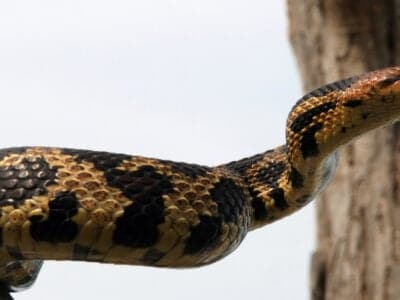
Fox Snakes
In some areas, fox snakes and gopher snakes have crossbred in the wild.
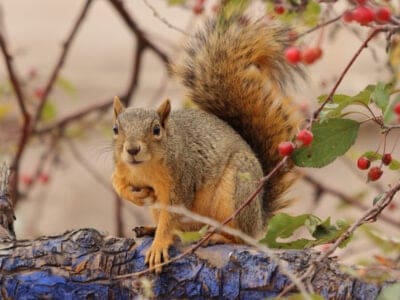
Fox Squirrel
Although it is a tree squirrel, it spends most of its time on the ground.
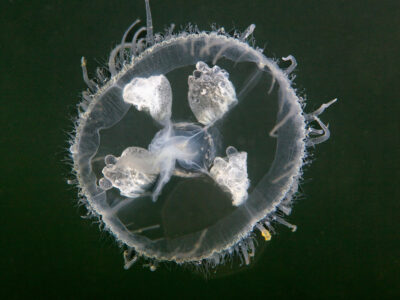
Freshwater Jellyfish
The freshwater jellyfish is native to China but is now found all over the world
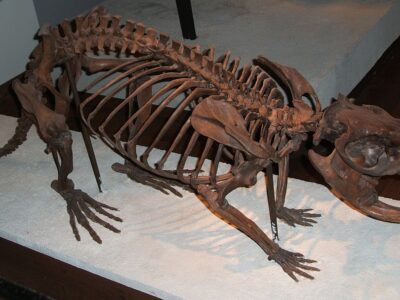
Giant Beaver
The Giant Beaver are not closely related to modern beaver at all.

Groundhog (Woodchuck)
They whistle to each other to warn of approaching danger!

Kentucky Warbler
The Kentucky Warbler appears to wear bright yellow cat-eye glasses!

Massasauga
The name “Massasauga” comes from the Chippewa language, meaning “Great River Mouth”.

Mealybug
They have a symbiotic relationship with ants.

Mockingbird
Mockingbirds are incredible mimics that can learn hundreds of songs!
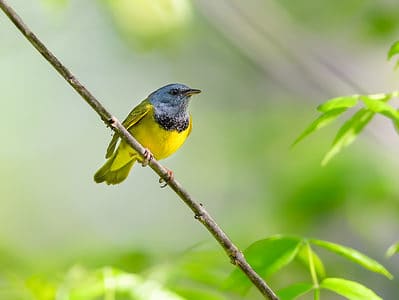
Mourning Warbler
The Mourning Warbler was named for its gray head, which resembles a mourning veil!

Nematode
Nematodes range in size from 1/10 of an inch to 28 feet long

Orb Weaver
Females are about four times the size of males

Owl
The owl can rotate its head some 270 degrees
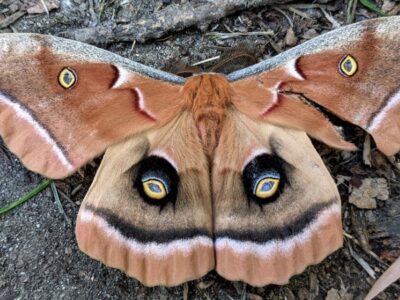
Polyphemus Moth
The Polyphemus moth doesn’t and can't eat, except when it's a caterpillar!
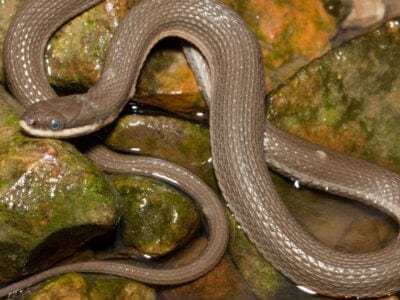
Queen Snake
Queen snakes have armor-like scales on the top of their head

Rat Snakes
Rat snakes are constrictors from the Colubridae family of snakes.

Red-Bellied Woodpecker
Red-Bellied Woodpeckers will often steal the nests of other birds.
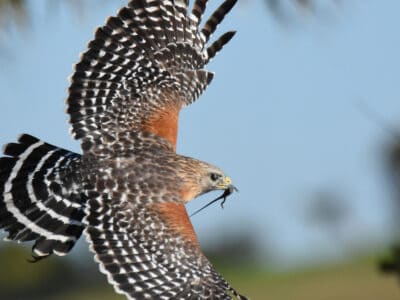
Red-Shouldered Hawk
Red-Shouldered Hawks reuse the same nesting area each year.

Rooster
Will mate with the entire flock!
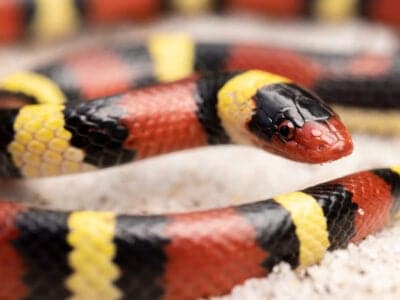
Scarlet Kingsnake
Scarlet kingsnake’s pattern is an example of Batesian mimicry.
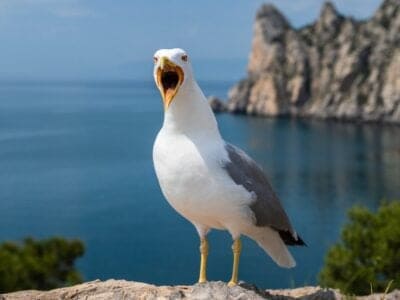
Seagull
Some gulls are capable of using tools

Smokybrown Cockroach
Has up to 45 eggs per egg case
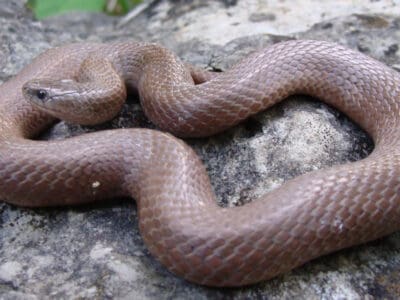
Smooth Earth Snake
Valeria Biddle Blaney (1828-1900) collected the first specimen in Maryland.

Southern Black Racer
These snakes live underground, beneath piles of leaf litter or in thickets, and they are expert swimmers.

Tiger Trout
As tiger trout are sterile, they cannot produce offspring. However, they do have relatively long lifespans and can live up to 10 years in captivity.

Tree Cricket
They make music with their wings
Indianian Animals List
- Admiral Butterfly
- American Eel
- Armyworm
- Bagworm Moth Caterpillar
- Beewolf wasp
- Blue Racer
- Bobolink
- Common Yellowthroat
- De Kay’s Brown Snake
- Dire Wolf
- Eastern Fence Lizard
- Eastern Hognose Snake
- Flea
- Fox Snakes
- Fox Squirrel
- Freshwater Jellyfish
- Giant Beaver
- Groundhog (Woodchuck)
- Kentucky Warbler
- Massasauga
- Mealybug
- Milk Snake
- Mockingbird
- Mourning Warbler
- Nematode
- Orb Weaver
- Owl
- Polyphemus Moth
- Queen Snake
- Rat Snakes
- Red-Bellied Woodpecker
- Red-Shouldered Hawk
- Rooster
- Sandhill Crane
- Scarlet Kingsnake
- Seagull
- Smokybrown Cockroach
- Smooth Earth Snake
- Southern Black Racer
- Swallowtail Butterfly
- Tiger Trout
- Tree Cricket
Animals in Indiana FAQs (Frequently Asked Questions)
What is the apex predator in Indiana?
Coyotes are the state’s apex predators. A highly adaptable carnivore that lives in most states of the country, the coyote is the largest predator in Indiana. Indiana’s other predators are bobcats, gray foxes, and red foxes.
What is Indiana’s state mammal?
Indiana does not have a state mammal. Its official state bird is the cardinal.
What waterfalls are in Indiana?
Indiana is home to a number of beautiful waterfalls. Some of its best include Cataract Falls in Owen County, Big Clifty Falls near Madison, and Rock Rest Falls near North Vernon.
Are there big cats in Indiana?
Indiana has bobcats. They are the only big cats in the state.
Does Indiana have cougars?
Indiana does not have a resident cougar population, but cougars sometimes cross over from neighboring states.
What spiders are in Indiana?
Indiana is home to many species of spiders. Some that are more notable include the brown recluse (which has a very venomous bite), the long-legged sac spider, six-spotted fishing spider, long-bodied cellar spider, and the black-tailed red sheetweaver.




